If you’re looking for a guide that will thoroughly explain how to make all your sourdough baked goods with organic, single-grain einkorn flour, then this is the article for you.
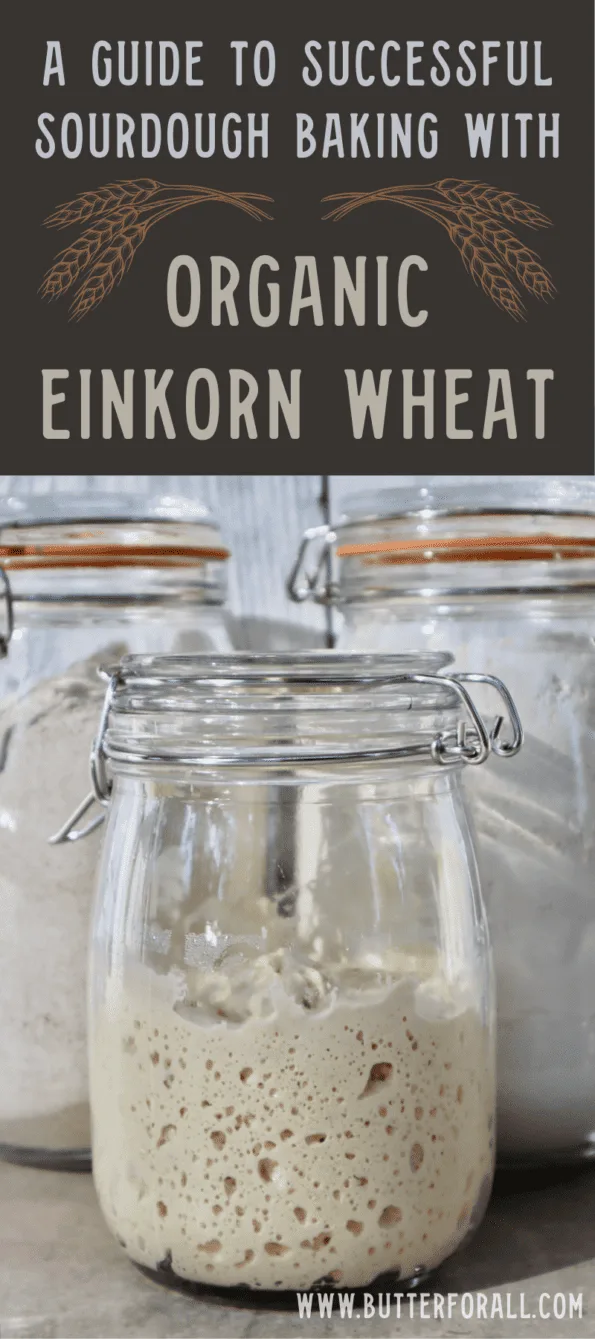
I’m going to walk you through the steps of maintaining a pure einkorn sourdough starter, show you how to adjust regular sourdough recipes to accommodate 100% einkorn flour, and give you some crucial tricks and tips to make you an einkorn sourdough baking success.
If you don’t have an einkorn starter yet, check out this recipe – Starting an Einkorn Sourdough Starter
Introducing Einkorn Wheat — A Small yet Mighty Grain
Don’t let the size of the einkorn grain mislead you. This small yet mighty grain is packed with extra protein, vitamins, minerals, and an exceptional flavor unrivaled by any other grain.
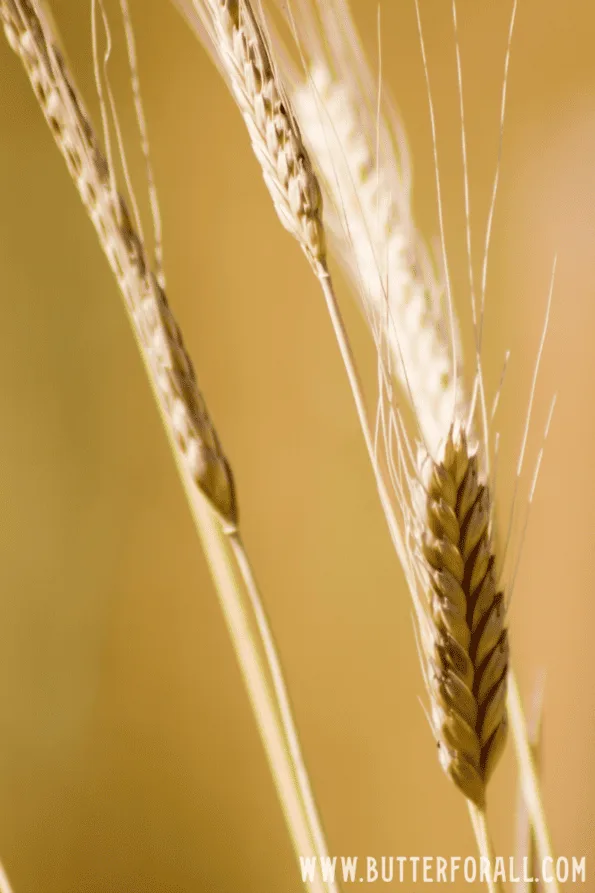
Einkorn’s Long History
Along with many other ancient grains, einkorn originated as a staple crop thousands of years ago in and around the Fertile Crescent. Over the last 12,000+ years, einkorn’s popularity has spread through vast areas of central Europe, the Mediterranean, and very recently to North America.
Einkorn grows well in mountainous regions with very little extra effort. It only needs sun and rain, which made it an ideal crop for early peoples.
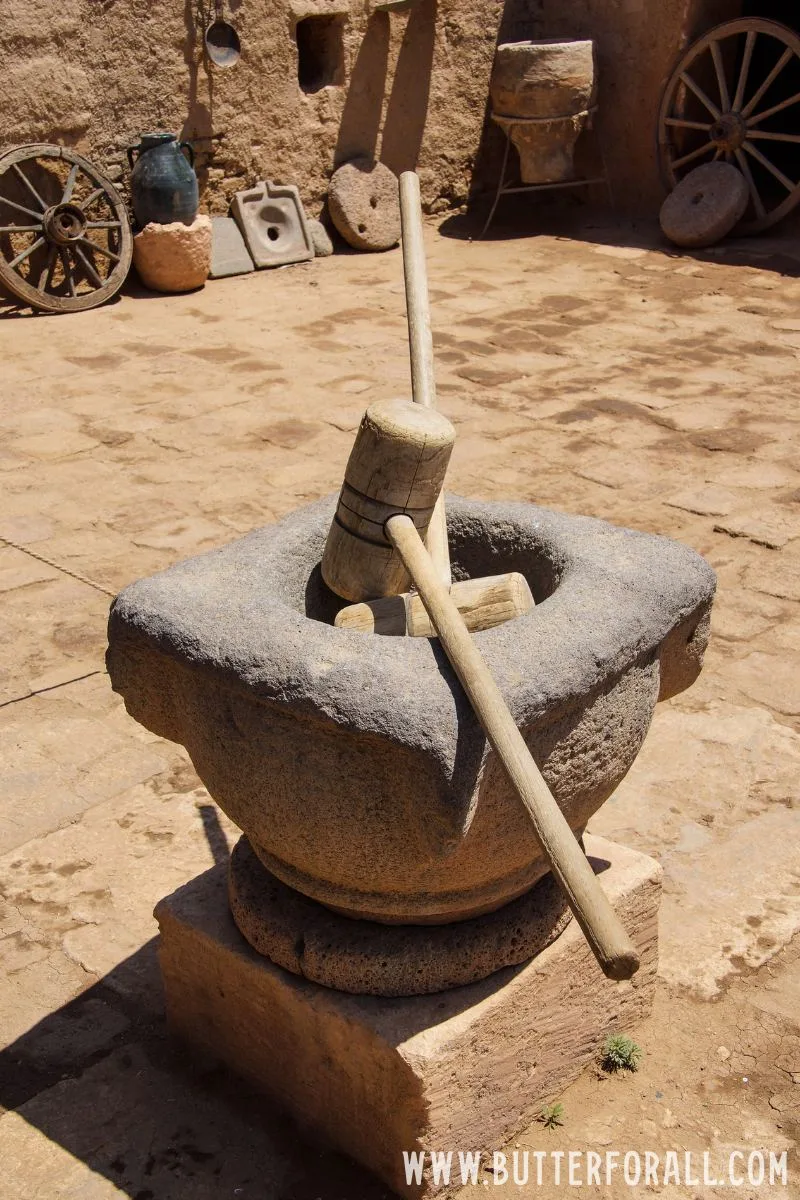
What Makes Einkorn Different?
Einkorn wheat has never been hybridized, so it still has just the original diploid genome of 14 chromosomes from its ancestor variety.
As far as we know einkorn is the only wheat still in cultivation today that has not been selectively bred for greater yields, more gluten, easier cultivation, or easier harvesting. Thus, einkorn is now the only wheat that has the same nutritional profile as the wheat that our ancient ancestors were eating.
Einkorn seems to naturally resist hybridization and cross-pollination unlike its ancient cousin emmer wheat, which is the great-great-grandparent to all modern durum wheat. In that way einkorn has been preserved in its ancient form.
However, there are still over 300 varieties of einkorn, with about 10 varieties in cultivation and production today. Varieties are distinguished by their texture, sowing season, and color.
Important note: Different varieties of einkorn flour will hydrate, ferment, proof, and bake differently. Try a few brands to decide what works best for you.
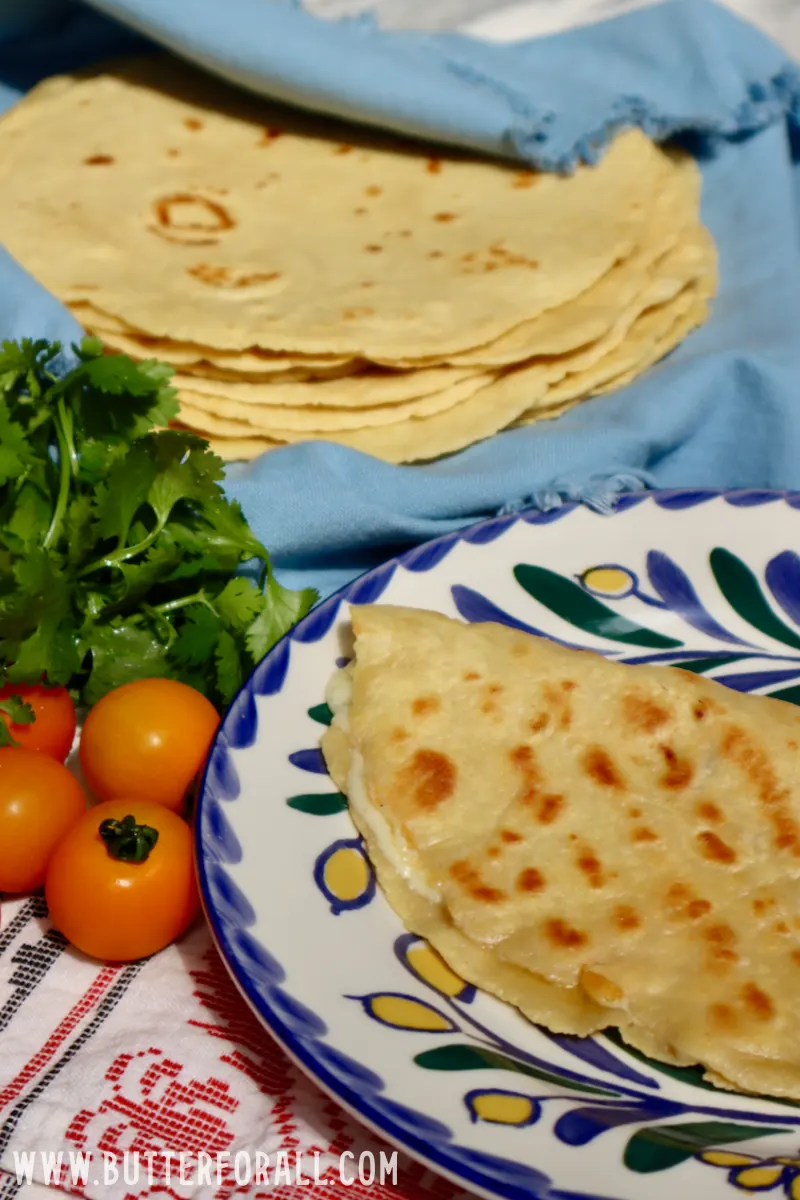
Einkorn Is Nutritionally Superior to Modern Wheat
Einkorn is a wonderful choice if you’re going to indulge in a baked good made with wheat flour. It naturally has less gluten and that gluten has a different structure than that in modern wheat. This makes einkorn easily digestible by even the most gluten-sensitive people.
It’s also rich in potassium, vitamin B6, phosphorus, essential fatty acids, and antioxidants like lutein and beta-carotene, thus giving the flour and resulting baked goods a beautiful golden hue as well as a better nutritional profile.
The most surprising benefit to eating einkorn wheat is the high protein content (somewhere between 16 to 18%, the highest of any form of wheat) that slows the body’s metabolism of wheat’s natural sugars. This makes it a superior choice for managing blood glucose.
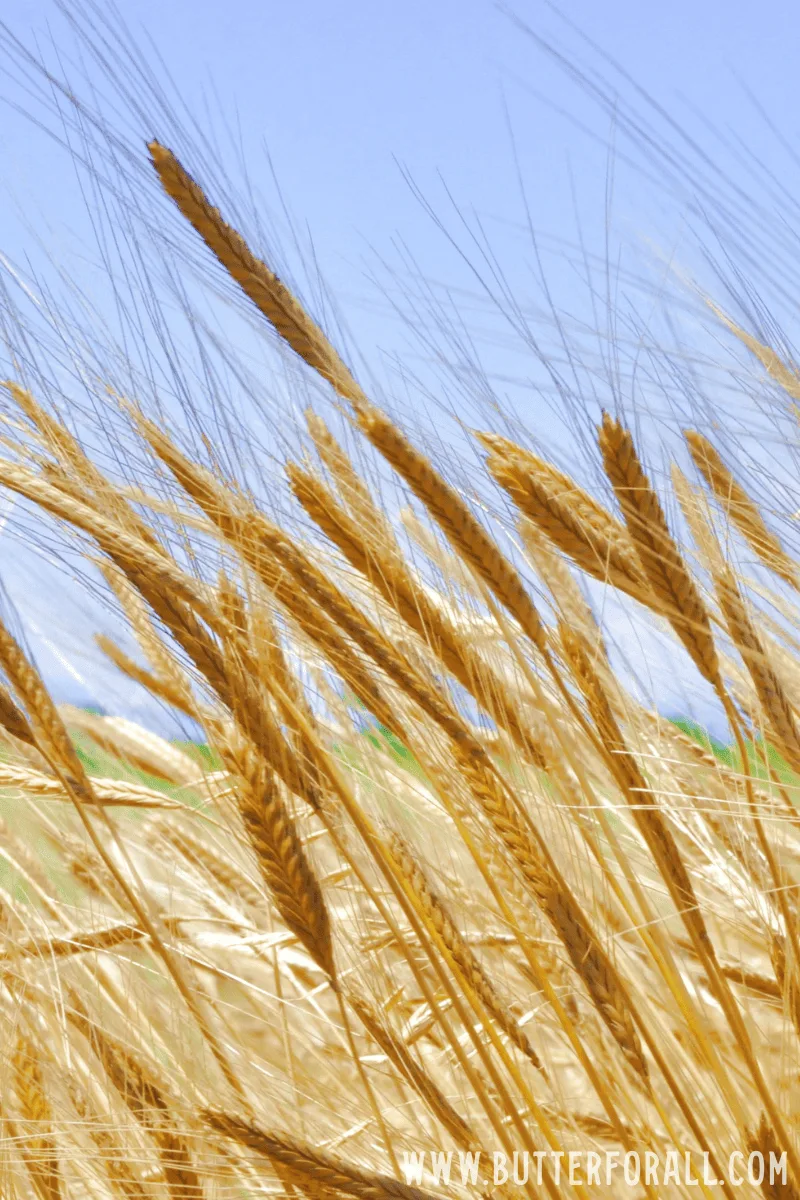
Einkorn Is Superior in Taste to Modern Wheat
They say good things come in small packages, and this is intrinsically true with the tiny yet tasty einkorn wheat berry.
This special ancient grain has an earthy wheat flavor. It’s buttery, nutty, and rich, unlike any wheat I’ve ever tasted. It’s easily becoming the star in my kitchen, in my business, and in my belly!
Einkorn’s Extra Cost Explained
Einkorn is known as a hulled wheat, meaning that the small wheat berries are protected by a thick fibrous hull. This makes einkorn one of the most disease- and pest-resistant crops but also poses challenges for mass production. There is extra time and effort associated with dehulling of the wheat berries before flour processing can even begin.
Because of the small size of einkorn wheat heads, they will yield significantly less flour per acre than their modern cousins. Therefore you can expect organic einkorn flour to cost three to four times that of modern organic all-purpose flour. In my opinion, the extra cost is worth every penny and made up for by the exceptional nutritional qualities, flavor, and unique digestibility.
Maintaining an Einkorn Sourdough Starter
There are a few key differences to note when maintaining a 100% einkorn starter.
- Einkorn sourdough starters ferment more quickly than modern wheat. This is important to pay attention to. You may be used to feeding your sourdough starter and expecting it to be active and ready to use within six to eight hours. With einkorn, you can expect your starter to be ready in half the time.
- Einkorn sourdough starters need a lower hydration. Because einkorn ferments more quickly, keeping your starter at a lower hydration will help you manage that fermentation. While I keep my normal sourdough starter at 100% hydration (which means equal weights flour and water), I keep my einkorn starter at 75% hydration (which means the water weight is 75% of the flour weight). To calculate 75% hydration, take the flour weight in grams and multiply it by 0.75 to get the desired water weight in milliliters.
- Einkorn sourdough starters should be fed more often. When refreshing your einkorn sourdough starter you will want to feed it at least every eight to 12 hours. If you leave your einkorn starter out at room temperature longer than that, you can expect it to over-ferment and become very sour and difficult to work with or revive.
- Always feed your einkorn sourdough starter before refrigeration. Einkorn starter will continue to ferment during refrigeration so it is best to give it a hearty feeding before putting it away. This will keep the starter active until its next use. Hooch will form quickly on an unfed starter even under refrigeration.
- Keep your einkorn sourdough starter small. Because of the high cost of this flour, it is best to keep a very small sourdough starter that you build up before use. I like to keep about 50g in the refrigerator.
Building and Feeding Your Einkorn Sourdough Starter for Use in Recipes
Remove your einkorn sourdough starter from the refrigerator. If it looks bubbly and active you can add to it the amount of flour and water you desire to get the amount of starter you need for your recipe. Remember einkorn sourdough starters should be kept at 75% hydration!
If you need a large quantity of starter you can build your starter up through several feedings to achieve the desired weight. Always plan to at least double, triple, or even quadruple the current weight of your starter with every feeding.
Time management will be essential if you are building a large starter through multiple feedings. For instance, if you plan to use your starter the following day make sure you feed it right before you go to bed and keep it as cool as possible overnight.
Reviving an Inactive Einkorn Starter
If your einkorn starter looks completely fermented or has a layer of hooch when you remove it from the refrigerator, you will probably need to refresh it several times before baking.
As an example, start with a small amount of starter (say 50g), feed it double that weight in flour (100g), and add water at 75% hydration (75ml). Let the einkorn starter ferment at room temperature for four to eight hours between feedings. For every subsequent feeding remove at least half of the starter and go through the process again. Do this until the starter is bubbly and active.
Collect the removed (“discarded”) starter in a jar or bowl for use in a discard recipe like crackers or pancakes.
What Makes Einkorn Sourdough Ferment So Quickly?
One of my answers is a guess, and one of my answers is a fact.
Based solely on my experience with sourdough I think einkorn ferments more quickly because of the way that the starch hydrates. The starch is very soft and fine and easily broken down. It supplies a quick and easy source of energy for yeast and bacteria. The gluten structure is also weaker so it has a tendency to over-proof and lose shape more easily.
We do know with 100% assurance that yeast and bacteria thrive in environments that have adequate vitamins and minerals. Because einkorn flour has such an abundance of these compounds it makes an ideal breeding place for yeast and bacteria and speeds up fermentation drastically.
Baking Sourdough Breads With Organic Einkorn Flour
Here are my top 10 tips for successful einkorn sourdough bread.
- Einkorn sourdough bread doughs need 25% lower hydration. Almost every sourdough recipe on my site could be converted to using 100% einkorn flour. But because of the texture of the flour and the way that it hydrates you want to use 25% less liquid. Further hydration adjustments can be made by adding slightly more flour or slightly less liquid.
- The texture of einkorn sourdough bread dough will always be sticky. Don’t be tempted to add too much flour. Try to use a light touch, be gentle with the dough, and use wet hands when stretching, folding, or kneading dough. Also, use plenty of flour on your surface when shaping.
- Einkorn sourdough bread dough has a weak gluten structure. This doesn’t mean that you can’t get a beautiful loaf of 100% einkorn bread. It just means that you need to be mindful of time, temperature, and handling.
- Don’t overwork einkorn sourdough bread dough. Because of its weak gluten structure, overworking the dough will break down the gluten network faster and contribute to a dense crumb. Instead, gently mix and lightly knead your dough.
- Einkorn sourdough bread dough will ferment and proof much faster than traditional sourdough. If you are just transitioning from white flour to 100% einkorn, then be prepared for your bulk fermentation time to be cut in half. Likewise, your proof time after shaping will generally also be shorter. If you have experience with other whole grains or ancient grains then you might be more prepared for the way einkorn behaves.
- Support your einkorn sourdough bread loaves. Because of its weaker gluten structure einkorn bread bakes best in straight-sided small loaf pans. This is especially true when using whole wheat. You can make beautiful einkorn boules using organic all-purpose einkorn flour.
- Don’t wait too long to bake your einkorn sourdough bread. To get the best possible rise in the oven, let your dough just double and then bake it directly. With white flour sourdough you can get away with letting your dough grow to more than double before baking, but that is not the case with einkorn. Because it ferments and proofs faster it just won’t have the energy left to have a spectacular rise in the oven if left to proof too long.
- Bake over-proofed einkorn sourdough anyway. It’s bound to happen, especially as you’re adjusting to working with this delicate flour. When it does, pat that bread dough out and bake it with some toppings on it!
- Choose the right einkorn flour for your project. Organic all-purpose einkorn flour works well for just about anything, but especially for cookies, pastries, sweet breads, tortillas, English muffins, pancakes, boules, and breads. The whole wheat flour is delicious but not suited for a long fermentation. With even less gluten structure, breads made from whole wheat einkorn flour will be denser with a tighter crumb. Instead try whole grain quick breads, cookies, and pastries.
- Store your einkorn flour in the refrigerator! You want to preserve the nutritional qualities of this beautiful and amazing flour. Buy fresh einkorn flour in small quantities and use it within a month or two for best results.
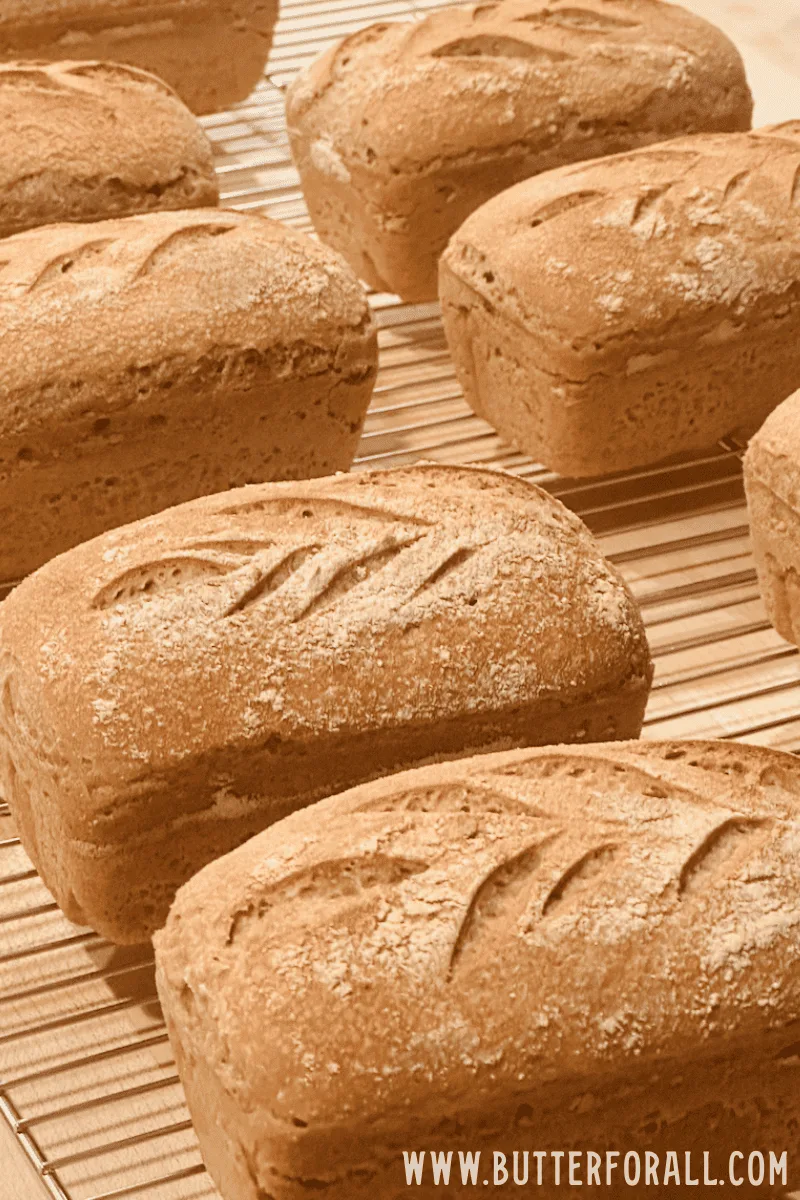
Tips on Dealing With Einkorn’s Sticky Nature
- Use a dough whisk or rubber spatula for combining ingredients.
- Don’t over-mix or over-work einkorn dough.
- Use very wet hands when hand-working einkorn dough in a bowl or,
- Use a plastic, silicone, or wooden bowl scrapper to do modified stretch and folds in the bowl.
- Use water on your work surface during shaping if you have a lower-hydration dough or your dough is strong and well developed.
- Use extra flour on your work surface during shaping if your have a high-hydration dough or the dough feels weak or underdeveloped.
Grinding Your Own Organic Einkorn Flour
Nothing can beat the flavor and nutrition that you will get with home-milled flour. Buying einkorn wheat berries will preserve the natural oils, vitamins, and minerals in the grain.
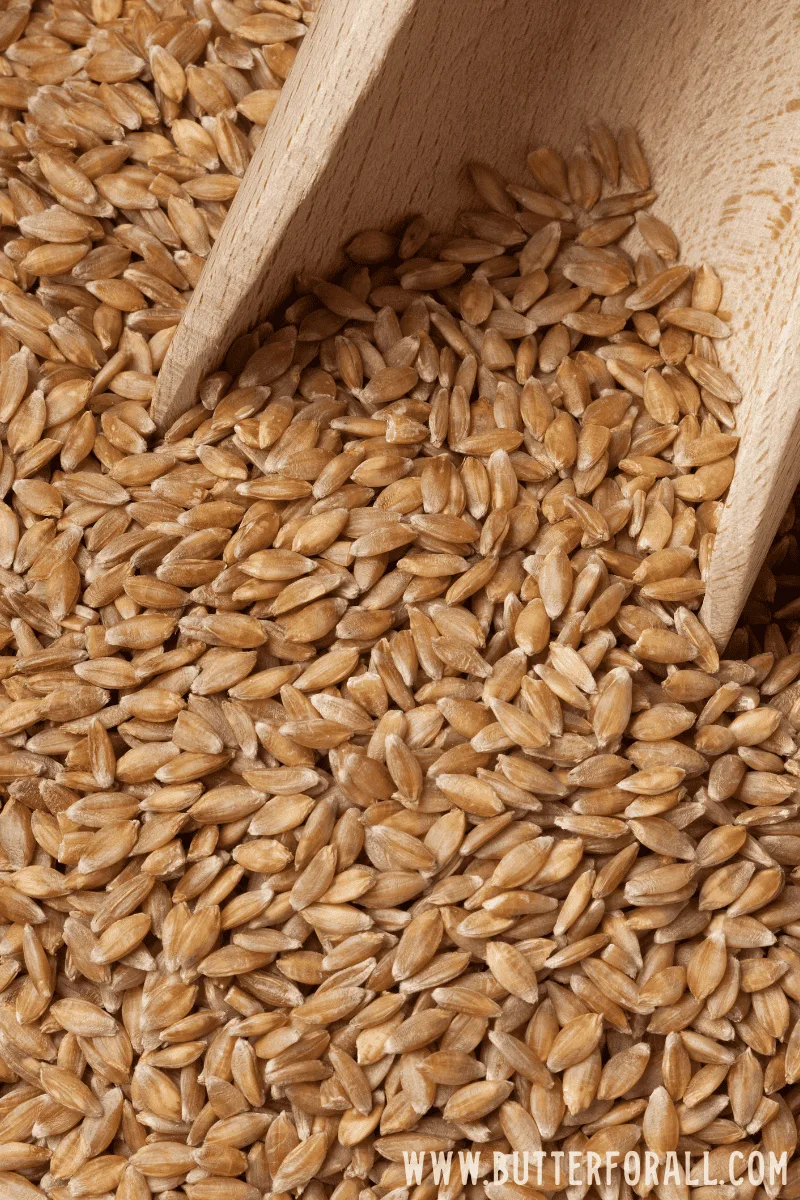
Once ground, einkorn flour can be sifted to create a lighter flour suitable for bread baking. Reserve the larger particles of bran for breakfast muffins!
If you choose to use freshly milled whole wheat in your recipes, be prepared to adjust hydration and fermentation time accordingly!
Have You Heard About Otzi the Iceman’s Last Meal?
It included einkorn!

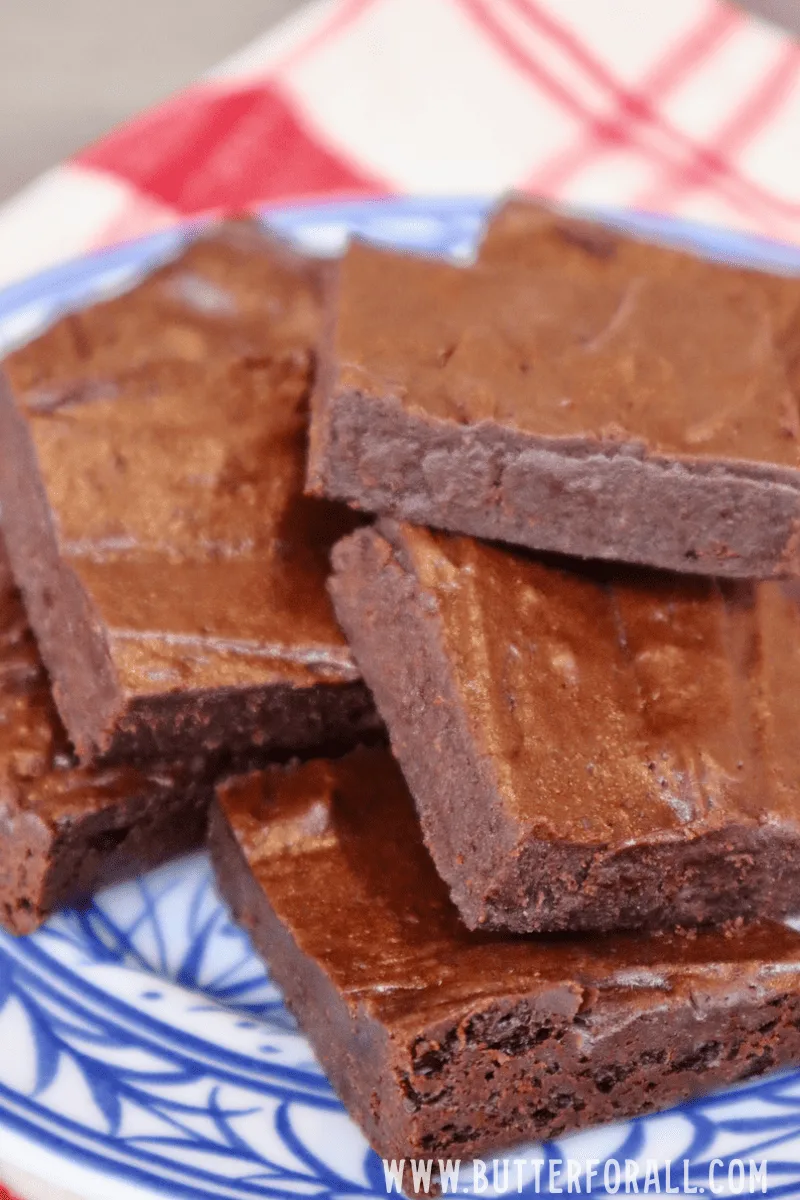
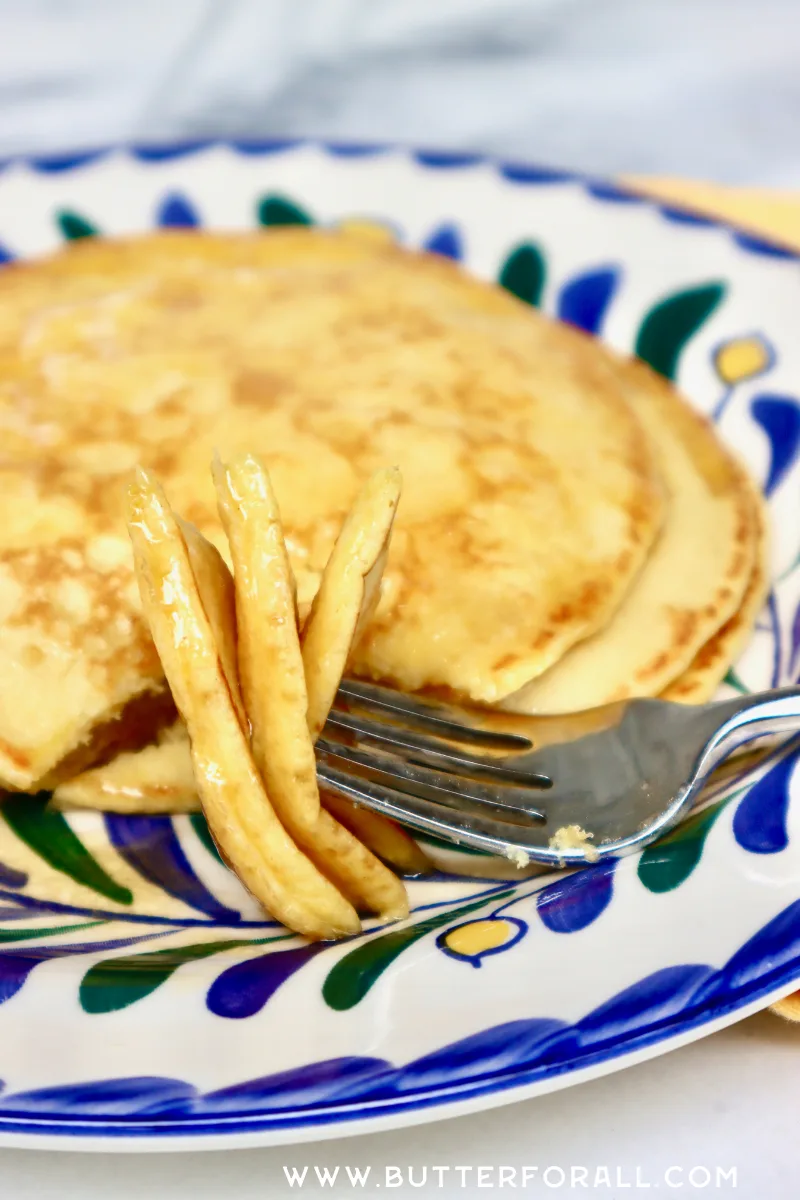
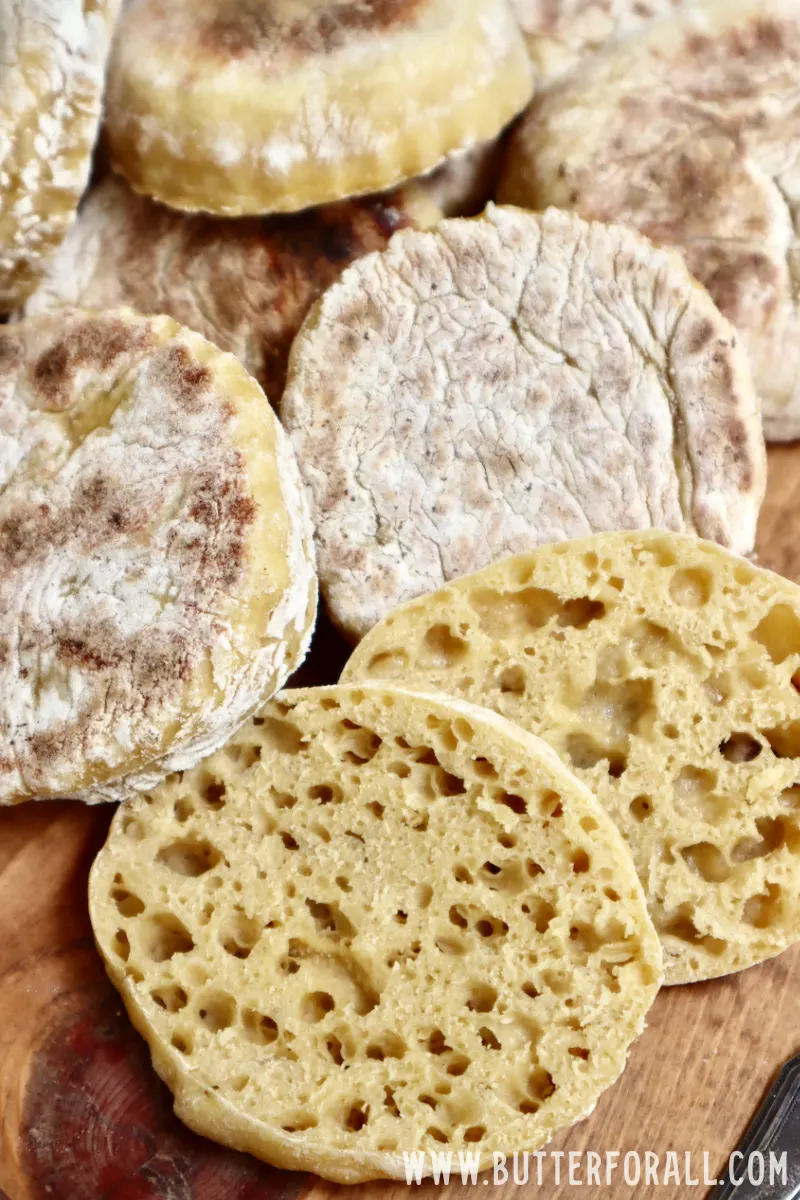
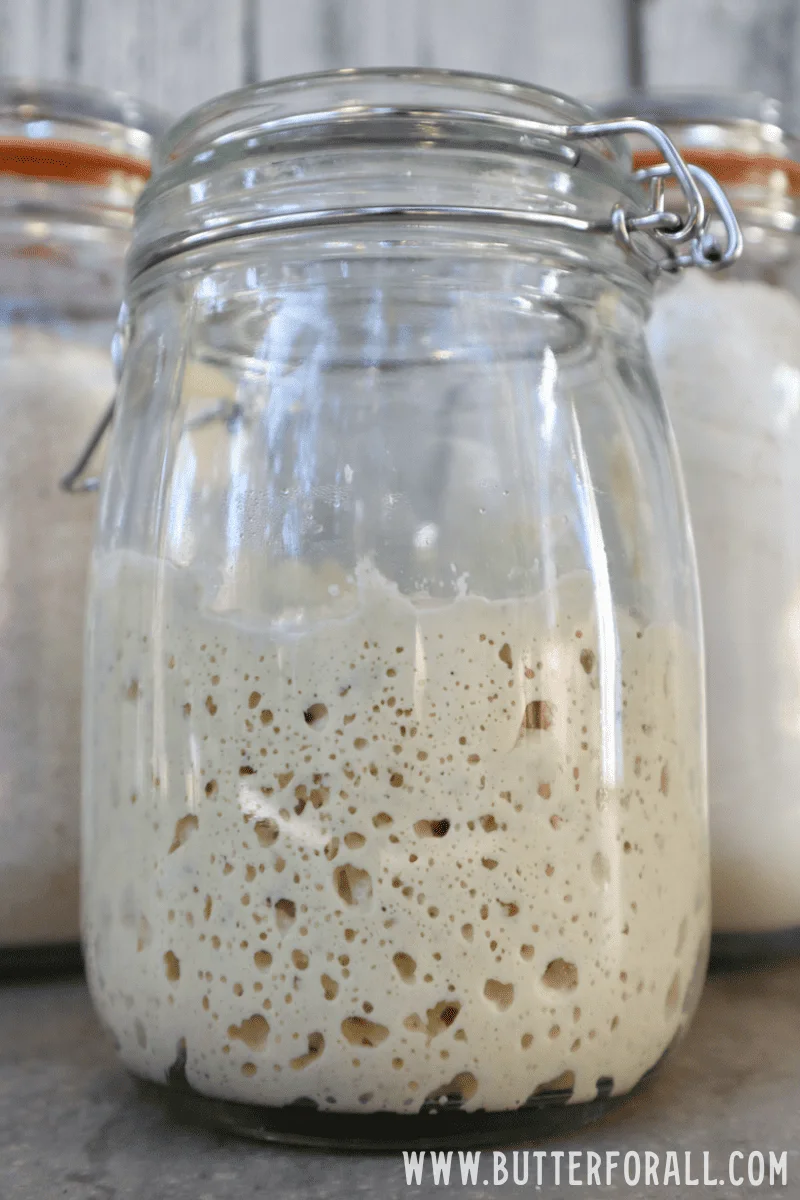
Allison
Thursday 29th of August 2024
Thank you for this beautiful page! Over the past two weeks, I have successfully created my Einkorn Starter using your instructions and I'm ready to make my first ever loaf. I have a few questions:
1. For the Master Recipe conversion to 75% hydration Einkorn... if the flour weight remains at 455g, and 75% of the liquid from that recipe (296g) is 222g... Would the starter weight still be 125g? Or does that need to be converted, too, because 125g is based on 100% hydration?
2. The Master Recipe says to wait 1 minute between each round of stretch and fold, but other places on your website (Boule in Dutch Oven recipe, and the Boule video) both say to wait 10 minutes between the 7 rounds of stretch and fold. So, what's best for the delicate structure of All Purpose Einkorn? Also, because Einkorn is delicate, does it mean that 7 rounds of stretch and fold are too many?
3. You said that Einkorn ferments and proofs faster. Will both periods of resting (the fermentation after kneading and the proofing after shaping) take about 2 hours each at room temperature? Would it be better for one of those to happen more slowly in the refrigerator overnight or is it ideal for it all to happen at room temperature in less time?
Butter For All
Friday 6th of September 2024
Hi Allison,
I'm so sorry for the slow reply.
#1. Honestly it probably won't make a huge difference. Go ahead and use the 125g of einkorn starter. If you're using a einkorn starter at 75% hydration then you're keeping the entire recipe at 75% hydration. Does that make sense?
#2. I think you've caught a typo! That should say 10 minutes. I'll make sure to update that recipe. Einkorn is very delicate so I would probably do between 3 and 5 rounds of stretch and fold.
#3. For me both fermentations take between 3 and 5 hours. I have successfully chilled my dough overnight before shaping, and it did not overproof. Whatever you do just make sure that the dough doesn't make too much acid because it will break down quickly.
I hope that's been helpful! I'm so excited to hear how your sourdough journey turns out!
erin
Tuesday 20th of August 2024
have you ever Made an einkorn sourdough ciabatta? I cannot for the life of me find a recipe of this ... looking or some nice 'rolls' for my girls lunches at school. also, how would you convert 75mL to grams? Totally new to sourdough and I am making my first loaf right now.
Butter For All
Wednesday 21st of August 2024
Hi Erin,
I have not tried einkorn ciabatta, but you got me curious so I'm giving it a go today. If I can get the recipe to work I'll definitely share it. With that said, most sourdough recipes can be converted to einkorn with a little tweaking. Ciabatta it classically a very high hydration dough that produces large open pockets of air. I expect that any similar recipe with einkorn will have a tighter crumb.
Milliliters are a measure of volume so you would need to set your scale to zero grams, measure out 75ml and weigh it. Take note of the weight in grams.
Hope that helps. I'll keep you posted on the ciabatta. :)
Gayle Sword
Wednesday 7th of August 2024
Hi Courtney,
If you want to use an Einkorn starter in a recipe that calls for a 100% hydration is that possible? I’m so happy I heard your interview on the Weston Price Foundation podcast which led me to your site. Yahoo!
Thanks,
Gayle
Butter For All
Thursday 15th of August 2024
Hi Gayle,
I'm so happy to have you here!
It should be no problem! You would just use the 75% hydration einkorn starter in the amount the recipe calls for. If hydration needs to be adjusted you would just add a little tiny bit of extra water to the recipe.
Happy baking!
April
Sunday 7th of April 2024
Hi Courtney,
I am new to sourdough and my first starter happens to be Einkorn (from a friend who is also new to it). I keep coming back to your guide over and over! I am currently working on reviving my starter. When I received it, it had hooch on top. I have a question when discarding and feeding are you suggesting to always remove half and then always replace it with the 100g and 75ml? I started with 50 grams of starter as suggested.
Thanks!
Butter For All
Tuesday 16th of April 2024
Hi April! How exciting that you're also working with an einkorn starter. The 100g-flour/75ml-water was just an example of the ratio to maintain a starter at 75% hydration. You can make as little or as much starter as you want, just keep it around 75% hydration for best results.
If you were using my example amounts to do your refreshing, you would remove any starter in excess of 50g. So if you start with 50g and add 100g of flour and 75ml of water, after fermentation you would actually remove 175g of starter getting you back down to the original 50g again. Does that make sense?
If you were trying to revive a really neglected starter, I would keep it very small, around 50g total. That way you won't be using a lot of your expensive einkorn flour. Maybe keep about 10g of mature starter in your jar, add 25g of flour and 18 to 20ml of water. That will give you a little over 50g of starter. The next time you feed it start with 10g again and repeat as needed. I recommend feeding every 8 hours if you're trying to boost the activity of your yeast.
I hope this helps! Feel free to reach out with any additional questions :)
Colleen
Sunday 25th of February 2024
Thank you for this information! I have been hoping for several years that you would experiment with einkorn and then teach us since you are a sourdough master! How similar did you find the initial creation of the starter with 100% einkorn to those of regular all purpose. Will it double in volume to show signs of being robust enough to begin baking with? Thank you!
Butter For All
Thursday 14th of March 2024
Hi Colleen,
Absolutely, I'm so excited to be bringing more einkorn recipes to the public! I actually used my original sourdough starter to create my einkorn starter. Because it's a wheat it functions almost identically to a regular sourdough starter, it just performs better at that lower (75%) hydration. I'm going to add on and write about the technique I used for starting the einkorn starter in this article very soon. Until then I'll just quickly go over the steps here so you can get started if you want to!
It's really as simple as swapping out the flour. So just create a secondary starter with einkorn flour, only using about 10-20g of your original starter. After a few feedings with einkorn flour you should be well on you way without much original flour remaining.
Thank you so much for stopping by! I hope you're doing well!
Courtney